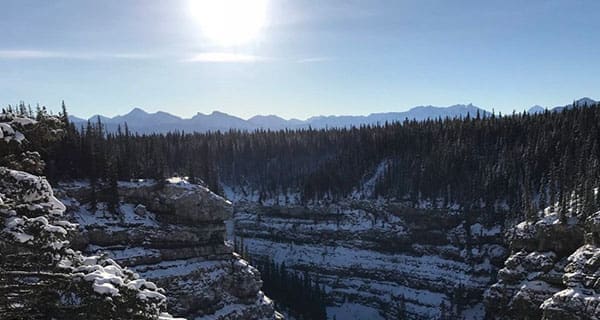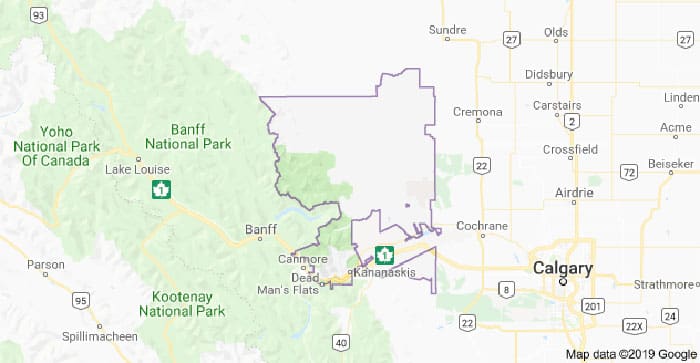 It’s disappointing to see that the Alberta government’s proposal to create new protected areas in west-central Alberta has led to a partisan political brawl.
It’s disappointing to see that the Alberta government’s proposal to create new protected areas in west-central Alberta has led to a partisan political brawl.
Over the last week, the government cancelled public information sessions for the Bighorn Country proposal because of reports of intimidation and threats by opponents to the proposal. The local MLA, Jason Nixon of the United Conservative Party, then became engaged in a war of words with Environment Minister Shannon Phillips.
Albertans are better than this and we should expect better from each other.
The Bighorn Country proposal is based on the model used so successfully to create Kananaskis Country more than 40 years ago. Although the creation of K-Country by former premier Peter Lougheed was not without controversy, you will be hard pressed to find any critics 40 years later. It has become a provincial treasure.
Criticism of the Bighorn Country proposal comes from a small but highly vocal minority of people. They claim that local residents and user groups don’t want the new protections for the land. They allege they have not been properly consulted and that the government’s proposal circumvents the land use planning process.
These claims don’t stand up to scrutiny.
Ted Morton, a former Progressive Conservative cabinet minister and leadership contender, was the architect of Alberta’s Land Use Framework more than 10 years ago. Morton wisely recognized that there is room for all types of land uses but that they cannot all occur in the same place. His plan was to identify the most appropriate land uses for each region of the province.
It was the former Progressive Conservative government that initiated land use planning in the North Saskatchewan Region in 2014. The cabinet appointed 25 members to a regional advisory council (RAC), and asked them to gather input and provide advice to the government for land use planning, including new protected areas.
This RAC included the reeves of Clearwater and Beaver counties, a councillor from the County of Vermilion River, the general manager of development services for Parkland County, the former president of the Coal Association of Canada, a forester, a rancher, a farmer, a real estate developer, employees of Talisman and Canadian Natural Resources Limited and a senior vice-president of EPCOR Utilities.
In other words, the council was not populated with environmentalists, city dwellers, or those out of touch with the local interests and economy.
The RAC spent four years and held 21 open houses in area communities. It held workshops and solicited online workbooks. Only then did the council provide 69 recommendations to the provincial government in March 2018. The current government then obtained more public input.
Those recommendations were mostly accepted by the current government with respect to new protected areas. In fact, 87 per cent of the new provincial wildland park and provincial parks proposed for Bighorn Country were identified by the RAC as areas to be protected. These facts contradict the information that is being circulated by opponents to Bighorn.
The protection and proper management of our spectacular province should not be a partisan political issue. As Albertans, we have a shared interest and responsibility in properly protecting and managing our precious landscapes.
Results of a survey conducted in January by the Edmonton market and social research firm Advanis indicate that 73 per cent of Albertans support the government’s plan to protect the Bighorn region, while only 16 per cent oppose the proposal. This widespread support comes from across the province and across the political spectrum. The majority of decided voters in this poll support the proposal, regardless of their preferred political party.
I am proud to have called Alberta home for the past 25 years. My wife and I have raised our four children here. We have benefited from strong economic opportunities, and even more from the natural beauty of our province. This is what distinguishes Alberta from so many other places.
It’s time to end the partisan bickering, to engage in respectful dialogue and to act civilly. It’s also time to take the necessary steps to create new protected areas in Bighorn Country.
This will create a legacy to be enjoyed and treasured by future generations of Albertans, just like Kananaskis Country. Let the government know that you agree.
Phil Nykyforuk is a Calgary lawyer and chair of the southern Alberta chapter of the Canadian Parks and Wilderness Society.
The views, opinions and positions expressed by columnists and contributors are the author’s alone. They do not inherently or expressly reflect the views, opinions and/or positions of our publication.


